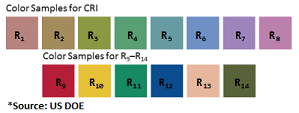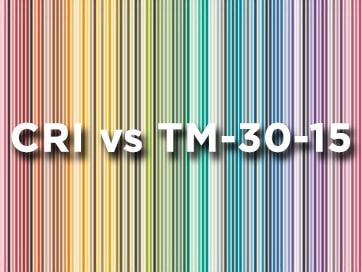Everyone in the lighting industry knows CRI and they know it well. It is the go-to metric for quality of light. But, why? Why do we all use number on a piece of paper or in a file to measure what we see without challenging it? Well, simply put, because it was the best tool available. Although no lighting systems have reached 100 on the CRI metric – comparing it to natural sunlight, a few have come close in the 90s.
That being said, we at PowerSecure Lighting have disproved the CRI metric. LED technology has grown out of the metric that hasn't been updated in 20 years, and made it obsolete within its relm.
CRI in a Nutshell
CRI compares color rendering properties of light sources having the same color temperature. There are a total of 14 colors that CRI compares and takes into account. The problem is that the colors used do not give equal weight to all of the wavelengths of light that are visible.

TM-30-15
This new dual metric system provides a measure of fidelity, like CRI does, but calculates it in a completely revised method. It also provides a measure of gamut referencing saturation and vibrancy. As opposed to the 14 Munsell colors used in CRI, TM-30-15 uses 99 color samples from actual objects in our environment that are evenly distributed throughout the wavelengths of visible light.

If you take a look at our VioLight technology in practice, you will see that the percieved light is much greater and the colors are vibrant and true – mimicking sunlight. Below is a photo of our standard 3000K fixture (left) results juxtaposed with the results of a 3000K fixture with our Violight Technology (right).

The CRI of both fixtures are about the same but the percieved light of the VioLight technology LED fixture (right) is more accurate and vibrant.
We hope that the new metric, TM-30-15 will take these obvious differences into account. We will find out during the Office of Energy Efficiency & Renewable Energy webinar on September 15.
